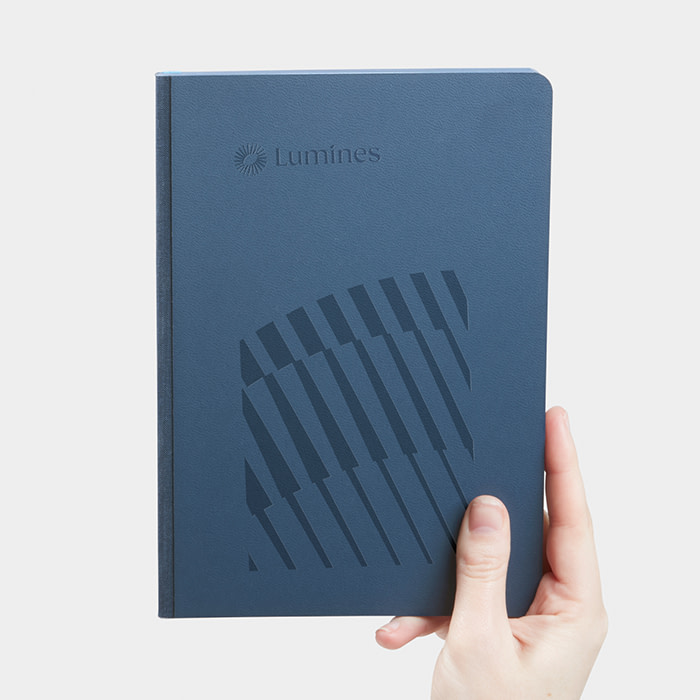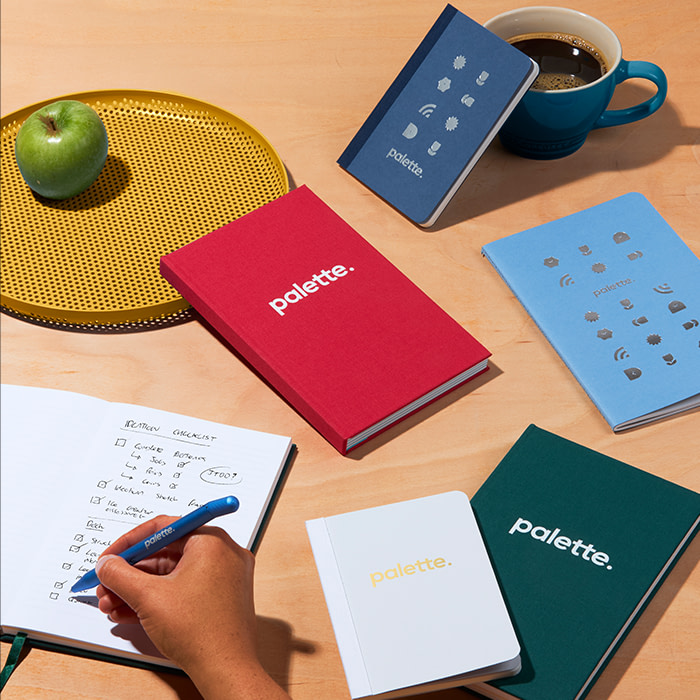10 best notebook(ish) facts you need to know
Calling all Notebook nerds.

Whether you’re jotting down ideas, doodling away, or keeping life organized, Notebooks are way more than just paper. They’ve got a rich history, some quirky stories, and plenty of cool facts to share.
If you love notebooks as much as we do, then you’ll love our 10 best notebook (ish) facts.
1. Notebooks have been around since Ancient Egypt

The origins of notebooks trace back to ancient Egypt, where papyrus scrolls were used to record information. These lightweight, portable scrolls made it easy to document important texts and ideas. The Romans later advanced this with wax tablets—wooden boards coated with wax, where a stylus could inscribe notes. Once the writing was no longer needed, the wax could be smoothed over and reused. These early forms of notebooks laid the foundation for how we capture and preserve ideas today.
2. Tokyo is home to the world’s largest stationery store

Founded in 1904 and located in the heart of Tokyo’s Ginza region, Itoya is Japan’s largest and most iconic stationery store. Spanning twelve floors, it’s the ultimate destination for stationery lovers, offering everything from high-end notebooks and pens to custom paper and crafting supplies. Each floor has its own theme, and visitors can explore unique Japanese stationery brands and design their own notebooks.
3. Coptic binding is an age-old technique still used today

One of the oldest bookbinding methods comes from early Christian Egypt. Known as Coptic binding, it involves sewing together folded sheets of parchment, allowing the notebook to open completely flat. This ancient technique still makes the best Notebooks thanks to its durability and functionality. At MOO, we took inspiration from this technique for our Hardcover Notebooks so you can keep your ideas flowing without damaging the spine. This timeless method proves that some things never go out of style.
4. L.E. Waterman filed the first notebook patent in 1888

The modern Notebook, as we know it, can be traced back to American inventor L.E. Waterman (yep, the same guy who invented the fountain pen). In 1888, he revolutionized the writing industry by filing a patent for a bound notebook. This was a game-changer, turning loose papers into a neat, portable tool that we now rely on for everything, from jotting down notes in meetings to journaling.
Over a century later, we now have many variations on Waterman’s original hardcover bound Notebooks—like MOO’s Tape Bound Notebooks—but the essence remains the same: a simple, reliable way to capture your thoughts on the go.
5. Leonardo da Vinci’s notebooks are the most expensive in the world

These notebooks, often called ‘codices,’ contain Da Vinci’s groundbreaking sketches, scientific observations, and personal thoughts, all written in his distinctive mirror-writing style. He used these to explore everything from anatomy to engineering, filling them with ideas that were centuries ahead of their time. The Codex Leicester, one of his most well-known notebooks, was purchased by Bill Gates in 1994 for a staggering $30.8 million, making it the most expensive manuscript ever sold.
6. Spiral-bound notebooks came in the 1920s

The spiral-bound notebook is said to have debuted in 1924. While several inventors contributed to the development of this design, Edward Podosek, an English inventor with many patents, is often credited with popularizing it. Podosek may not have been the original inventor of the spiral notebook, but he was the first known person to use it regularly. The wire coil binding allowed pages to be easily flipped, torn out, and laid flat, a game-changing feature that made writing more convenient.
7. Softcover notebooks became popular after WWII

Softcover Notebooks began gaining popularity in the mid-20th century, particularly after World War II. Advances in production methods made it easier and more affordable to create Softcover Notebooks compared to the traditional Hardcover versions. Their lightweight and flexible nature makes them the best Notebooks for people on the go.
8. Charles Darwin’s notebooks were missing for years

In 2001, two of Charles Darwin’s notebooks, containing key ideas about natural selection and his famous Tree of Life sketch, mysteriously vanished from the Cambridge University Library. For over two decades, their whereabouts remained a mystery—until 2022, when they were unexpectedly returned, wrapped in a pink gift bag with a note wishing the librarians a Happy Easter. Despite their return, the identity of the person responsible remains unknown, leaving the mystery of the missing notebooks unsolved.
9. People in the U.S. love notebooks

The United States is crazy about notebooks, with millions of students, professionals, and creatives using them daily. The U.S. imports more notebooks than any other country, spending $1.09bn in 2022. Over 200 million notebooks are sold annually for everything from school notes to personal journaling. It shows that people still love putting pen to paper as a way to stay creative, productive, and organized.
10. Notebooks can make your brand more memorable

Studies show that 66% of people are more likely to remember a brand after receiving a custom gift, like a notebook they’ll use daily. Customization options—like those offered by MOO—not only make your Notebook unique but also make for great gifts. You can add your name, logo, brand colors, and even design your own cover, turning an everyday item into a powerful branding tool that keeps your company top of mind.
Let’s get notebook-y
Explore MOO’s range of Notebooks. You can also design your own Notebook for you and your team with a MOO Business Plan. To get started, just fill out this form, and one of our team members will be in touch shortly.
Keep in touch
Get design inspiration, business tips and special offers straight to your inbox with our MOOsletter, out every two weeks.




